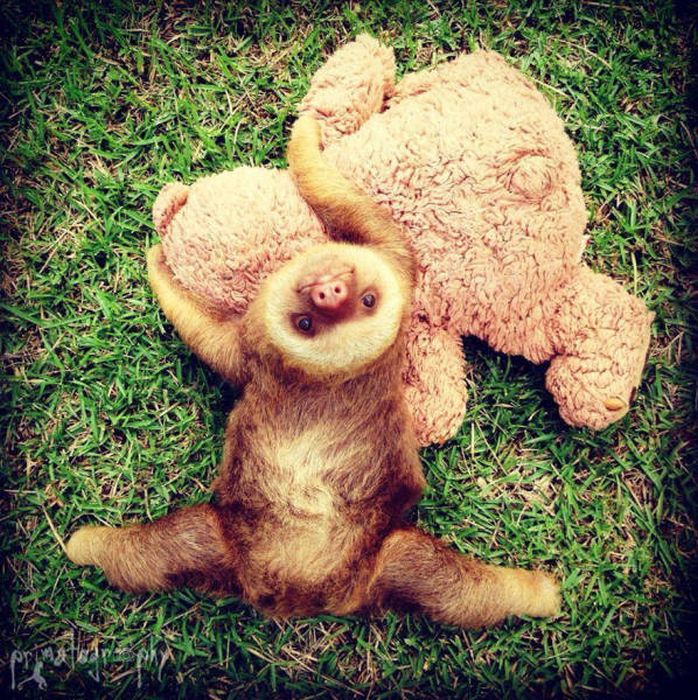|
|
Baby Sloth
|
Almost all mammals have seven cervical vertebrae or "neck bones" (including those with very short necks, such as elephants or whales, and those with very long necks, such as giraffes). The few exceptions include manatees and two-toed sloths, which each have only six cervical vertebrae, and three-toed sloths with nine cervical vertebrae.
Sloths are members of the superorder Xenarthra, a group of mammals that appeared approximately 60 million years ago, although at least one source puts the date at which sloths and related animals broke off from other placental mammals at about 100 million years ago. Also included among the Xenarthra are anteaters and armadillos. The earliest xenarthrans were arboreal herbivores with sturdy spines, fused pelvises, stubby teeth and small brains.
The living sloths belong to one of two families, known as the Megalonychidae ("two-toed" sloths) and the Bradypodidae (three-toed sloths). All living sloths have in fact three toes; the "two-toed" sloths, however, have only two fingers. Two-toed sloths are generally faster moving than three-toed sloths. Both types tend to occupy the same forests: in most areas, one species of three-toed sloth and one species of the larger two-toed type will jointly predominate.
|
|









